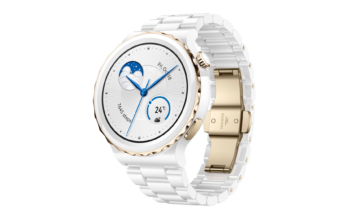
There is nothing more delightful than seeing the joy on a dog’s face as they furiously chase down a bouncing tennis ball. Unfortunately, your pup’s favorite toy could be hazardous to their health. Here’s why you should replace those tennis balls with something safer—and how to choose your dog’s toys more wisely.
Tennis balls are for humans
The biggest risk of giving a tennis ball to your doggo, according to Animal Dental Care & Oral Surgery of Colorado Springs, is that they aren’t durable enough to be chewed on—and if your dog swallows them, pieces of tennis ball structure and surrounding fuzz pose a risk of creating an intestinal blockage. Of course, this is the concern with any non-edible chew toy you hand to your dog, but the tennis ball’s chemical makeup can be particularly toxic.
My own chihuahua used to love pulling on tennis ball fuzz with her teeth. She often struggled to get it out of her gums, which was kind of funny (though I of course made sure to help her out before she swallowed it), but I never knew the risks. Chewing on tennis balls can cause enamel abrasion and pose a choking hazard, even before the tiny bits of rubber make it to the animal’s gut. “It is [likely] that a tennis ball contains lead along with myriad other toxic materials,” notes Animal Dental Care. Although a tennis ball seems like a traditional dog toy, there are healthier alternatives.
How to select a safe chew toy
Selecting a chew toy your dog will actually play with can be difficult. Knowing your dog—and a lot of trial and error— is key to getting the right toy, but there are a few things to consider before you start shopping. Preventive Vet has a short checklist to help you select safe toys to try out.
- Hardness: The toys should give a little bit, as toys that are too hard could hurt your dog’s teeth.
- Softness and durability: On the other hand, toys should not be too soft. These toys can ripped apart, and any fluff or smaller pieces within can be eaten, creating a choking hazard. (This is why you should never give a dog a stuffed toy meant to be played with by a human.)
- Coating: Watch out for toys that have flavorings that might upset your dog’s stomach, Preventive Vet notes pig ears often have coatings that may not agree with your dog’s digestive system.
- Size and shape: If the toy is too small, the dog could choke. Too big, and they may get it stuck in their mouth—so keep your dog’s mouth and head size in mind while browsing.
- Washability: Items should be washer safe, so regular disinfecting won’t harm the toy (and increase the chances your dog will swallow part of it).
- Entertainment value: Don’t forget to consider how much fun your dog will have, should they bother to play with it.
Monitor your dog’s behavior after playtime
Once you’ve got a few safe options, it’s time for the fun part—playing with your pup. Dog walking site Doggy Strides says to monitor your dog’s reaction to the new toys. Make sure they are safely enjoying the toy and not ripping the stuffing out or eating any of the debris. Inspect your dog’s dental health and “pay attention to the color of the gums, any developing ‘lumps,’ signs of broken/chipped teeth and areas that seem/look painful” advises Vets Now. Lastly, make sure they are having fun. If your dog seems disinterested, then it’s probably not the toy for them.
Take into account whether your dog likes to rip apart toys, eat toys, or spend hours chewing. If your dog likes to eat pieces, edible toys may be best. If they love to destroy things, rather than tossing them a toxic tennis ball, get them rubber or edible toys that can withstand their destructive form of play. For the Violet Beauregard variety of chewer, braided ropes are a best bet. Dogs need chew toys for their mental and physical well being, so getting the right one is important—and will mean more fun for both of you in the end.




what by-products remain after cbd extraction?
Thanks for this glorious article. One more thing to mention is that almost all digital cameras are available equipped with a new zoom lens that allows more or less of a scene being included by way of ‘zooming’ in and out. Most of these changes in focusing length are generally reflected inside the viewfinder and on huge display screen at the back of any camera.